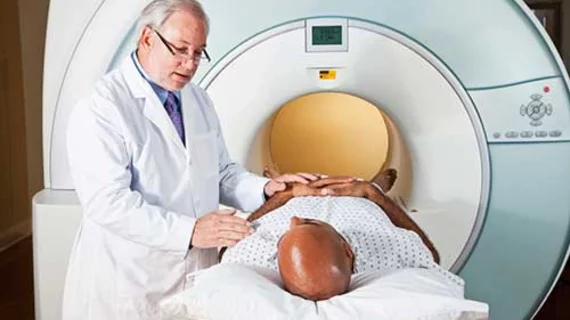Poor MRI quality highlights radiologists’ need to address language barriers
MRI exams acquired from patients who need a language translator appear to be of “significantly worse” quality, underlining the need to strengthen communication during scans, according to a new study.
Experts note that since the 1980s, there’s been a surge of individuals who speak a language other than English at the home. With that comes difficulties communicating with providers and poor health outcomes, and the radiology field is not immune to this trend, New York University experts reported Feb. 11 in Abdominal Imaging.
Taking a closer look at this barrier and how it impacts MRI acquisition, they found that those who required a translator produced poor quality images when compared to their counterparts who speak English as a second language, but did not need help understanding a technologist’s instructions. This highlights an area of potential improvement that radiologist practices can address as they strive to provide more equitable care.
“With the large growth of patients with limited English proficiency in the United States, linguistic barriers between patients and their healthcare providers are a common obstacle for administering services effectively,” wrote lead author and NYU radiologist Myles Taffel, MD, and colleagues. “While attempts to bridge this communication gap are recognized in the screening and consent process for numerous medical procedures, a potential gap in MRI examination administration has largely gone unrecognized.”
To better understand this issue, Taffel and colleagues conducted a retrospective analysis of 126 patients who had abdominal imaging using a 3T MRI system within NYU’s care network. The team broke the study population into three groups—English speakers, those who use it as their second language, and individuals who required a translator during MRI.
Three abdominal radiologists then viewed the images and rated them on a scale of 1 to 5 based on the degree of respiratory motion artifact and overall image quality. Readers scored the translator group significantly worse in both categories, investigators found. Researchers believe this disparity most likely stemmed from miscommunication between the patient and technologist. Precise instructions required for respiratory timing and depth “can be confusing, even for English speaking patients, and the introduction of a translator as an intermediary may introduce a second level of miscommunication,” they wrote.
Taffel suggested several possible changes that might remedy this issue, such as better training interpreters on MRI-specific breathing instructions or having a translator in the room with the patient, rather than on the phone.
“Implementation of such strategies may be hindered in some practices due to issues relating to cost and translator availability,” Taffel et al. added. “Alternative educational tools, such as instructional videos in specific languages viewed in advance of the examination, could also be employed to assist patient understanding of MRI breathing instructions.”

